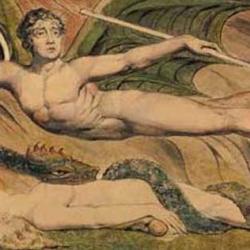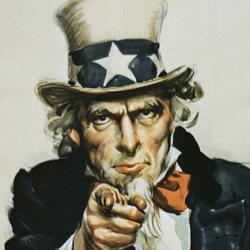One of the many illuminating observations in Philipp Blom’s Fracture is his observation that the early 20th century witnessed a massive crisis of manhood. He sees signs of it already in pre-World War I Europe (covered in Blom’s The Vertigo Years) as the rise of machinery and factory labor robbed men of the nobility and honor they had in traditional societies. They were reduced to doing repetitive women’s work. City life left them little scope to be masculine. And then women added insult to injury by noisily demanding their own rights. Rosa Mayreder declared masculinity to be dead.
As Blom says, “This social and intellectual upheaval caused a multitude of reactions, most important those among men who saw their masculinity threatened by the changing patterns of power and by a personal and professional life marked by increasing speed and insecurity. Those who could not cope with the new demands were declared ‘neurasthenics’ and sent to mental hospitals to recuperate away from the constant haste of city life. Others sought refuge in rituals of masculinity such as bodybuilding and a cult of health and fitness. Uniforms were in fashion, and more duels were being fought than ever before, while small advertisements in newspapers from Chicago to Berlin asked their readers to consider whether they might be suffering from a secret ‘manly weakness’ or from ‘nervous exhaustion,’ and proposed tinctures and electric baths to stimulate virility” (5). Effete aestheticism and brutal fascism were alternative responses to the emasculations of modernity.
The prospect of war promised something else. Blom thinks many accounts of the war frenzy are exaggerated; many did warn about the catastrophe ahead and protested the war. But he confirms that many greeted the war with relieved enthusiasm. Yet the warn brought no relief, and Blom argues that it brought no relief because the war was waged according to the same emasculating principles as modern urban life.
Blom’s vivid description of the war is no doubt touched by later surrealist imagery, but it’s also the case that Dada and Surrealism turned the experience Front into art. On the Western Front “was the scene of the most technologized, mechanized warfare humanity had seen to date. A moonlike wasteland cratered by hundreds of thousands of shells and scarred by trenches running for thousands of miles, this was modernity unhinged. Everything here was mass-produced and standardized; every human being carried a number and wore a uniform. There was no more mechanized, more industrialized, more rationalized, and at the same time more obviously insane environment than the Western Front, and the armies on all sides were gigantic machines. Men, horses, provisions, ammunition, news, secrets, ideas, and experiences were transported over thousands of miles along sophisticated road, rail, and communications networks to be consumed at their destination. Fighting had become an industrial process rather than an act of personal bravery or even heroism” (7). Many returned shell-shocked, more helpless than they were before the war.
David Martin has written that Protestantism has been a force for pacifying men—not emasculating them, but turning masculine energies to productive uses. When we link this with Blom’s thesis, we might have some insight into the divergence between Continental infatuation with fascism and Anglo-American resistance: Perhaps Puritanism and Methodism had inoculated England and America against the most thuggish responses to the crisis of modernity.















